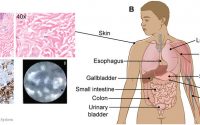Noisy knee
U
A study published in the British Journal of Sports Medicine (BJSM) provided fresh insights into the prevalence of knee crepitus and its implications for structural knee pathology. Led by researcher Jamon Couch, the systematic review delves into how common knee crepitus is among the general population and those with specific knee conditions, and what it potentially signifies about the health of the knee joint.
Knee crepitus, characterized by audible popping, crackling, or grinding sounds during knee movement, is a common concern across various ages and can often trigger anxiety about serious underlying conditions such as osteoarthritis (OA). The study underscores the importance of understanding knee crepitus as it is recognized in international guidelines as a clinical indicator of knee OA. Yet, its occurrence in pain-free individuals without any clear pathology has fueled ongoing debates about its role and significance in knee health diagnostics.
The research team analyzed data across 103 studies involving over 36,000 participants to assess the prevalence and implications of knee crepitus. They aimed to quantify the association of crepitus with knee structural abnormalities as seen on various imaging modalities.
The findings are eye-opening: about 41% of the general population experiences knee crepitus, with rates slightly lower in pain-free individuals without prior knee injuries. Among those diagnosed with knee OA, the prevalence soars to 81%. Furthermore, the presence of crepitus is associated with a threefold increase in the likelihood of a radiographic diagnosis of OA and is also linked to the presence of osteophytes, cartilage damage, and bone marrow lesions on MRI scans.
These results suggest that while knee crepitus is widespread and often linked with structural changes indicative of osteoarthritis, it is not always a direct cause for concern. This study serves as a crucial reminder for therapists and clinicians to approach knee crepitus with a balanced perspective—recognizing its potential as a diagnostic marker while also reassuring patients about the varied nature of its clinical significance.
For therapists, the study highlights the need for effective communication with patients experiencing knee crepitus. It’s important to alleviate fears by explaining that crepitus can occur even in the absence of pain or significant pathology and that its presence alone should not drive treatment decisions. Instead, a comprehensive assessment of symptoms and imaging findings should guide clinical interventions.


